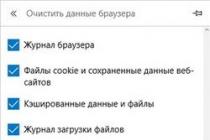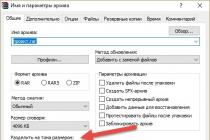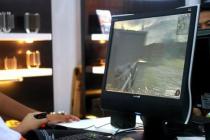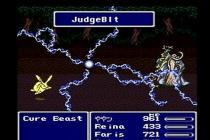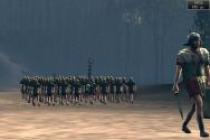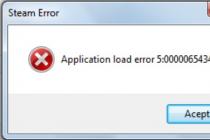Those whose native language is Russian are very lucky. And not only because of its euphony. The fact is that in the Russian alphabet there are only thirty-three letters that fit on any keyboard. The situation is quite different with the Chinese language. After all, it is one of the most difficult languages to learn in the world - it has only about 50 thousand hieroglyphs.
Naturally, not all of them are used in everyday life, but still quite a lot ... So how do the Chinese get out of the situation? Is it true that their keyboards are like those shown in this photo?
2

In general, no! The Chinese also use standard-sized keyboards, the same as ours. However, they didn't get there right away. Their first typewriters were simply monstrous. For example, the typewriter "Shuange" of the middle of the last century. Its principle of operation is simple, it is based on a bank of hieroglyphs, located on an ink pad. The operator had to have exceptional patience, because he had to look for the required hieroglyph with a magnifying glass for a long time (each hieroglyph in the machine corresponded to a separate character), then, using the handle, actuate the "paw" that "captured" the desired character and printed it on a paper attached on top sheet. Then the paper reel shifted slightly, making room on the sheet for the next character. Naturally, it was not possible to type quickly on this typewriter - ten hieroglyphs per minute at best. Then came more comfortable machines that had few keys. This was done by decomposing the hieroglyphs into their component parts. Only sixty-four keys! The machine assumed the presence of a special "window" in which one or another hieroglyph appeared, depending on the key pressed by the operator. When another option was needed in the same row, a special function key was used, which helped to determine the correct hieroglyph. Although text was printed much faster on this machine, it was not widely used. First of all, because of its high price.
3

In the future, this method of typing hieroglyphs began to be used on computer "claves", and reached the present. As a matter of fact, all Chinese characters consist of sets of the same graphemes, that is, components. Only two hundred and eight graphemes. Actually, there are five basic features (一, 丨, 丿, 丶, 乙) and twenty-five most used characters. For all of them on the keyboard there is a separate key. There are also a number of constants and rules of the Chinese language, thanks to which the typing of characters on the keyboard is made a little easier. One way or another, but in most cases, for typing, the Chinese have to press the same key several times, or use combinations. Well, what can you do, if you were already born a Chinese. In addition, there is also a phonetic way of typing. And hybrid ones, which combine phonetic and structural methods. However, in the case of the Chinese language, almost every method is complex and requires perseverance and attention. If you are already on the shoulder, try to start learning this amazing language.
You probably imagined it as a whole organ - a grand structure a couple of meters long with hundreds and thousands of keys. In fact, most Chinese people use a regular Latin QWERTY keyboard. But how can you type such a myriad of different hieroglyphs with it? We asked our employee Julia Dreyzis to tell us about this. She is connected with China by both old love and work.
Background: Typewriters
For several thousand years, the cunning Chinese managed to bring the number of hieroglyphs to 50,000 with a tail. And although the number of characters needed in everyday life is not measured in tens of thousands, anyway, whatever one may say, the standard set of the old printing house is 9000 letters.For a long time, typing was carried out according to the principle "for each hieroglyph - a separate printed element". Therefore, I had to work with monster cars like this:
Shuange typewriter, 1947 (the principle of operation was invented by the Japanese Kyota Sugimoto in 1915).
Its main element is a bank of hieroglyphs on an ink pad. A mechanical system is fixed above the hieroglyphs: a handle, a "foot" for gripping and a reel with a sheet of paper. The whole mechanism, together with the reel, following the handle, is able to move left, right, forward and backward due to the effort of the driver. To type the text, the typist searches for the desired character with a magnifying glass for a long time, places the system over it and, by pressing the handle, activates the “foot”, which grabs the character and, unfolding it, prints it on a sheet of paper on the go. In this case, the sheet reel rotates slightly, providing space for the next character. Of course, the printing process on such a unit is extremely slow - an experienced operator could type no more than 11 hieroglyphs per minute.
In 1946, the famous Chinese philologist Lin Yutang proposed a variant of a typewriter built on a completely new principle - the decomposition of hieroglyphs into its component parts.

Lin Yutang's electromechanical typewriter, 1946
Unlike its large predecessors, the new typewriter was no larger than its Latin counterparts, and there were few keys on it. The fact is that the keys did not correspond to hieroglyphs, but to their constituent parts. In the center of the device was a "magic eye": when the driver pressed a combination of keys, a variant of the hieroglyph appeared in the "eye". To confirm the selection, an additional function key had to be pressed. With only 64 keys, such a machine could easily provide 90,000 characters and a speed of 50 characters per minute!
Although Lin Yutang managed to obtain a patent for his invention in the United States, it never went to the masses. It is not surprising, because the production of one such device at that time cost about 120,000 dollars. In addition, on the day when the presentation for the Remington company was scheduled, the machine refused to work - even the magic eye did not help. The idea was successfully shelved until better times.
But in the era of the widespread use of computers, Lin Yutang's idea of \u200b\u200bdecomposing hieroglyphs into its component parts found a new life. It formed the basis of the structural methods for entering Chinese characters, which we will talk about now.
(By the way, in the 80s, the Taiwanese company MiTAC even developed its own structural input method, Simplex, directly based on Lin Yutang's coding system.)
Structural Methods
At least a dozen such methods are known, and all of them are based on graphic structure hieroglyph. Chinese characters are puzzles assembled from the same parts (the so-called graphemes). The number of these graphemes is not so great - 208, and they can already be "stuffed" into a regular keyboard. True, you get about 8 graphemes per key, but this problem is easily solved.One of the most common structural input methods is kill jixing(Wubing zixing - "input by five strokes"). How does it work? I'll warn you right now: it's difficult.
In fact, all Chinese characters are divided into four groups:
- Basic 5 strokes (一, 丨, 丿, 丶, 乙) and 25 more very frequently used hieroglyphs (each of them is assigned a key).
- Hieroglyphs, between the graphemes of which there is a certain distance. For example, the character 苗 consists of the letters 艹 and 田, between which there is a distance (although in print they are a little “compressed” and it may seem to you that there is no distance between them).
- Hieroglyphs whose graphemes are connected to each other. Thus, the character 且 is a grapheme 月 connected to a horizontal line; 尺 consists of the letter 尸 and the falling stroke.
- Hieroglyphs whose graphemes intersect or overlap each other. For example, the character 本 is the intersection of the graphemes 木 and 一.

At first glance, it may seem that the graphemes are arranged randomly. Actually it is not. The keyboard is divided into five zones, according to the number of basic features (they are marked in different colors in the figure). Inside each zone, the keys are numbered - from the center of the keyboard to the edges. The number is made up of two digits from 1 to 5 - depending on what basic features the grapheme is assembled from.
Well, let's start with the easiest graphemes to enter - the capital graphemes of each key (they are highlighted in large print in the table). Each of them represents one of the 25 commonly used hieroglyphs, which were discussed above. To enter such a hieroglyph, just press the corresponding key four times. It turns out that 金=QQQQ, 立=YYYY, etc.
So 毅=U+E+M+C. To enter hieroglyphs consisting of more than four graphemes, you need to enter the first three graphemes and the last one.
The most difficult thing to enter hieroglyphs, consisting of two or three graphemes. Since there are a lot of them, several hieroglyphs will inevitably appear, claiming the same key combination. To distinguish between them, the developers came up with special code. This code consists of two digits, the first is the serial number of the last line of the hieroglyph, and the second is the number of the hieroglyph group (remember the four groups into which the hieroglyphs are divided).
Fortunately, when typing most commonly used characters, you won’t have to think about codes, because the characters will appear on the screen after the first two or three clicks. And the 24 most common characters can be entered at all with one click (they are assigned keys).
The disadvantages of structured input are obvious: it's complicated - above was only a digest version of its description! To master it, the Chinese even came up with a special mnemonic rhyme. But the structural method opens up the possibility of blind input, which increases the maximum typing speed to 160 characters per minute. Therefore, professional typesetters use it. And do not forget: 160 characters per minute is about 500 keystrokes in the same minute!
For structural input, the most common QWERTY keyboard is most often used - after all, the location of hieroglyphs on it still has to be taught. But sometimes you can also find such keyboards with graphemes on the keys:

True, I have not seen such keyboards in all my time in China :)
Phonetic methods
There are simply no typewriters using these typing methods - phonetic methods owe their appearance exclusively to computers. After all, using the phonetic method, you enter not the hieroglyph itself, but its pronunciation - and the system already finds the desired hieroglyph. But here's the problem: there are so many characters in Chinese that dozens of hieroglyphs can correspond to the same pronunciation. The desired character, as a rule, has to be selected manually from the list, which makes the input process rather slow. Predictive systems like T9 come to the rescue.The most common phonetic method is the famous pinyin(Pinyin). Based on it, a phonetic input system is built, which is included in the standard Asian Language Pack Windows systems(starting with the XP version - before that it had to be installed additionally). Let's see how it works.
For example, we want to enter the word "blogger" - wangmin.
We type wang first (or wang3 with a tone to reduce the number of options). After pressing the spacebar, a hieroglyph with reading is substituted van. But it's not the one van what we need. Right click on it:

A long line of matches comes out. We can, breaking our eyes, look for our van or just enter the second syllable of the word - min. The system is smart - it will find the word in the dictionary wangmin and automatically select the desired van and necessary min. Banzai, we did it!

Input systems Google Pinyin and Sogou Pinyin went further - they remember user preferences and suggest the right words based on the context.
Here is an example of how Google Pinyin parses a seemingly furious sequence
And gives the correct variant of the set:
I saw Wang Zhizhi play in the same match with Yao Ming(We are talking about two Chinese NBA basketball players). Especially nice that the names are spelled correctly.
There is an alternative in Taiwan pinyin-system - input by zhuyin(Zhuyin). It is not the Latin alphabet that is used, but the syllabic alphabet with icons like hieroglyphs. Since there are few icons in the alphabet, it is easy to scatter them around the keyboard. Hong Kong has its own variant of romanization for the local dialect - yutphin(Jyutping), it is also actively used for phonetic input.
The main disadvantage of phonetic input systems is the rather low typing speed - about 50 characters per minute (compare with kill jixing with its 160 characters per minute). The fact is that the input of a hieroglyph by the method pinyin occurs, on average, for six keystrokes, while when entering by kill jixing four will suffice. In addition, blind recruitment by this method is impossible. And then you need to know pinyin/zhuyin, which is far from suitable for every Chinese, because from the first grade of the school, knowledge (if any) managed to fade a little. And it is not always easy to remember how some rare hieroglyph is read. Therefore, in China, it is gaining more and more popularity. kill jixing. Nevertheless, pinyin still easier to learn than structural methods. Well, for a foreigner, such a system is just like a balm for the soul.
As we can see, for phonetic input, we also do not need any special keyboard- any keyboard with Latin QWERTY layout is enough. Well, for example, the one in front of you is quite suitable :)
Hybrid Methods
These methods are some combination of phonetic and structural input methods. The simplest example- method yinxing(Yinxing - "sound and form"). A hieroglyph is typed by entering a transcription and pointing to a graphic element. A limited set of graphic elements is spaced across the keyboard, so theoretically it is not difficult to remember them.In practice, hybrid input systems are gradually dying out. They require the user to simultaneously have knowledge of the complex combinatorics of structural systems and a good command of transcription. It's easier to master one thing perfectly.
So is there a "standard" method?
And here it is not. In China, the structural method is the most popular kill and phonetic pinyin. Taiwan loves the phonetic method zhuyin(since many taught it at school, and not pinyin) and obsolete structural method cangjie(Cangjie). It was invented back in 1976 and has retained all its shortcomings since then: it is very difficult to enter punctuation marks with this method, you must always guess the correct way to break the hieroglyph and remember the complex layout (many Taiwanese even stick it on the monitor out of desperation). In Hong Kong cangjie taught in school and clearly prefer it to all other methods.Methods Based on Recognition
It turns out that none of the listed methods of keyboard input is ideal. Not surprisingly, the Chinese decided to cling to their last hope - recognition. Now recognition of both speech and handwriting is included in the standard Language packWindows 7. It is suggested that before use, it is better to put the system into "learning mode" for at least 15 minutes to give it time to get used to your handwriting and speech patterns.But methods based on recognition have not gained wide acceptance. Keyboard input is still considered more reliable.
Recognition of oral Chinese is complicated by the fact that the proportion of people who speak with perfect pronunciation is not so large. Dialectal features come out here and there and spoil the whole picture. About foreigners, for whom mastering four tones is already a feat, and there is no need to speak.
Handwriting of characters seems to be easier, and there are now many PDAs that support this input method. However, this method has not reached wide application. The fact is that the Chinese for the most part write in inarticulate italics and it can be difficult for them to adjust to the slow drawing of each feature. Often the problem is that they simply don't remember the normal stroke order because they're used to writing abbreviated forms! So it turns out that input based on recognition is suitable mainly for language learners, which is actively used by online dictionaries. For example, on the website of the popular
Have you asked yourself such a question? And I was thinking yesterday. I searched the internet and this is what I found:You probably imagined it as a whole organ - a grand structure a couple of meters long with hundreds and thousands of keys. In fact, most Chinese people use a regular Latin QWERTY keyboard. But how can you type such a myriad of different hieroglyphs with it? We asked our employee Julia Dreyzis to tell us about this. She is connected with China by both old love and work.
Background: Typewriters
For several thousand years, the cunning Chinese managed to bring the number of hieroglyphs to 50,000 with a tail. And although the number of characters needed in everyday life is not measured in tens of thousands, anyway, whatever one may say, the standard set of the old printing house is 9000 letters.For a long time, typing was carried out according to the principle "for each hieroglyph - a separate printed element." Therefore, I had to work with monster cars like this:
Shuange typewriter, 1947 (the principle of operation was invented by the Japanese Kyota Sugimoto in 1915).
Its main element is a bank of hieroglyphs on an ink pad. A mechanical system is fixed above the hieroglyphs: a handle, a "foot" for gripping and a reel with a sheet of paper. The whole mechanism, together with the reel, following the handle, is able to move left, right, forward and backward due to the effort of the driver. To type the text, the typist searches for the desired character with a magnifying glass for a long time, places the system over it and, by pressing the handle, activates the “foot”, which grabs the character and, unfolding it, prints it on a sheet of paper on the go. In this case, the sheet reel rotates slightly, providing space for the next character. Of course, the printing process on such a unit is extremely slow - an experienced operator could type no more than 11 hieroglyphs per minute.
In 1946, the famous Chinese philologist Lin Yutang proposed a variant of a typewriter built on a completely new principle - the decomposition of hieroglyphs into its component parts.

Lin Yutang's electromechanical typewriter, 1946
Unlike its large predecessors, the new typewriter was no larger than its Latin counterparts, and there were few keys on it. The fact is that the keys did not correspond to hieroglyphs, but to their constituent parts. In the center of the device was a "magic eye": when the driver pressed a combination of keys, a variant of the hieroglyph appeared in the "eye". To confirm the selection, an additional function key had to be pressed. With only 64 keys, such a machine could easily provide 90,000 characters and a speed of 50 characters per minute!
Although Lin Yutang managed to obtain a patent for his invention in the United States, it never went to the masses. It is not surprising, because the production of one such device at that time cost about 120,000 dollars. In addition, on the day when the presentation for the Remington company was scheduled, the machine refused to work - even the magic eye did not help. The idea was successfully shelved until better times.
But in the era of the widespread use of computers, Lin Yutang's idea of \u200b\u200bdecomposing hieroglyphs into its component parts found a new life. It formed the basis of the structural methods for entering Chinese characters, which we will talk about now.
(By the way, in the 1980s, the Taiwanese company MiTAC even developed its own structural input method, Simplex, directly based on Lin Yutang's coding system.)
Structural Methods
There are at least a dozen such methods known, and all of them are based on the graphic structure of the hieroglyph. Chinese characters are puzzles assembled from the same pieces (the so-called graphemes). The number of these graphemes is not so great - 208, and they can already be "stuffed" into a regular keyboard. True, you get about 8 graphemes per key, but this problem is easily solved.One of the most common structural input methods is − kill jixing(Wubing zixing - "input by five strokes"). How does it work? I'll warn you right now: it's difficult.
In fact, all Chinese characters are divided into four groups:
- Basic 5 strokes (一, 丨, 丿, 丶, 乙) and 25 more very frequently used hieroglyphs (each of them is assigned a key).
- Hieroglyphs, between the graphemes of which there is a certain distance. For example, the character 苗 consists of the letters 艹 and 田, between which there is a distance (although in print they are a little “compressed” and it may seem to you that there is no distance between them).
- Hieroglyphs whose graphemes are connected to each other. Thus, the character 且 is a grapheme 月 connected to a horizontal line; 尺 consists of the letter 尸 and the falling stroke.
- Hieroglyphs whose graphemes intersect or overlap each other. For example, the character 本 is the intersection of the graphemes 木 and 一.

At first glance, it may seem that the graphemes are arranged randomly. Actually it is not. The keyboard is divided into five zones, according to the number of basic features (they are marked in different colors in the figure). Inside each zone, the keys are numbered - from the center of the keyboard to the edges. The number is made up of two digits from 1 to 5, depending on what basic features the grapheme is assembled from.
Well, let's start with the easiest graphemes to enter - the capital graphemes of each key (they are highlighted in large print in the table). Each of them represents one of the 25 commonly used hieroglyphs, which were discussed above. To enter such a hieroglyph, just press the corresponding key four times. It turns out that 金=QQQQ, 立=YYYY, etc.
So 毅=U+E+M+C. To enter hieroglyphs consisting of more than four graphemes, you need to enter the first three graphemes and the last one.
The most difficult thing to enter hieroglyphs, consisting of two or three graphemes. Since there are a lot of them, several hieroglyphs will inevitably appear, claiming the same key combination. To distinguish between them, the developers came up with a special code. This code consists of two digits, the first is the serial number of the last line of the hieroglyph, and the second is the number of the hieroglyph group (remember the four groups into which the hieroglyphs are divided).
Fortunately, when typing most commonly used characters, you won’t have to think about codes, because the characters will appear on the screen after the first two or three clicks. And the 24 most common characters can be entered at all with one click (they are assigned keys).
The disadvantages of structured input are obvious: it is complex - above was only a digest version of its description! To master it, the Chinese even came up with a special mnemonic rhyme. But the structural method opens up the possibility of blind input, which increases the maximum typing speed to 160 characters per minute. Therefore, professional typesetters use it. And do not forget: 160 characters per minute is about 500 keystrokes in the same minute!
For structural input, the most common QWERTY keyboard is most often used - after all, the location of hieroglyphs on it still has to be taught. But sometimes you can also find such keyboards with graphemes on the keys:

True, I have not seen such keyboards in all my time in China :)
Phonetic methods
There are simply no typewriters using these typing methods - phonetic methods owe their appearance exclusively to computers. After all, using the phonetic method, you enter not the character itself, but its pronunciation - and the system already finds the desired character. But here's the problem: there are so many characters in Chinese that dozens of hieroglyphs can correspond to the same pronunciation. The desired character, as a rule, has to be selected manually from the list, which makes the input process rather slow. Predictive systems like T9 come to the rescue.The most common phonetic method is the famous pinyin(Pinyin). Based on it, a phonetic input system is built, which is included in the standard Asian Language Pack of the Windows system (starting from the XP version - before that it had to be installed additionally). Let's see how it works.
For example, we want to enter the word "blogger" − wangmin.
We type wang first (or wang3 with a tone to reduce the number of options). After pressing the spacebar, a hieroglyph with reading is substituted van. But it's not the one van what we need. Right click on it:

A long line of matches comes out. We can, breaking our eyes, look for our van or just enter the second syllable of the word - min. The system is smart - it will find the word in the dictionary wangmin and automatically select the desired van and necessary min. Banzai, we did it!

Input systems Google Pinyin and Sogou Pinyin went further - they remember user preferences and suggest the right words based on the context.
Here is an example of how Google Pinyin parses a seemingly furious sequence
And gives the correct variant of the set:
I saw Wang Zhizhi play in the same match with Yao Ming(We are talking about two Chinese NBA basketball players). Especially nice that the names are spelled correctly.
There is an alternative in Taiwan pinyin-system - input by zhuyin(Zhuyin). It is not the Latin alphabet that is used, but the syllabic alphabet with icons like hieroglyphs. Since there are few icons in the alphabet, it is easy to scatter them around the keyboard. Hong Kong has its own variant of romanization for the local dialect − yutphin(Jyutping), it is also actively used for phonetic input.
The main disadvantage of phonetic input systems is the rather slow typing speed - about 50 characters per minute (compare with kill jixing with its 160 characters per minute). The fact is that the input of a hieroglyph by the method pinyin occurs, on average, for six keystrokes, while when entering by kill jixing four will suffice. In addition, blind recruitment by this method is impossible. And then you need to know pinyin/zhuyin, which is far from suitable for every Chinese, because from the first grade of the school, knowledge (if any) managed to fade a little. And it is not always easy to remember how some rare hieroglyph is read. Therefore, in China, it is gaining more and more popularity. kill jixing. Nevertheless, pinyin still easier to learn than structural methods. Well, for a foreigner, such a system is just like a balm for the soul.
As we can see, for phonetic input, we also do not need any special keyboard - any keyboard with a Latin QWERTY layout is enough. Well, for example, the one in front of you is quite suitable :)
Hybrid Methods
These methods are some combination of phonetic and structural input methods. The simplest example is the method yinxing(Yinxing - "sound and form"). A hieroglyph is typed by entering a transcription and pointing to a graphic element. A limited set of graphic elements is spaced across the keyboard, so theoretically it is not difficult to remember them.In practice, hybrid input systems are gradually dying out. They require the user to simultaneously have knowledge of the complex combinatorics of structural systems and a good command of transcription. It's easier to master one thing perfectly.
So is there a "standard" method?
And here it is not. In China, the structural method is the most popular kill and phonetic pinyin. Taiwan loves the phonetic method zhuyin(since many taught it at school, and not pinyin) and obsolete structural method cangjie(Cangjie). It was invented back in 1976 and has retained all its shortcomings since then: it is very difficult to enter punctuation marks with this method, you must always guess the correct way to break the hieroglyph and remember the complex layout (many Taiwanese even stick it on the monitor out of desperation). In Hong Kong cangjie taught in school and clearly prefer it to all other methods.Methods Based on Recognition
It turns out that none of the listed methods of keyboard input is ideal. Not surprisingly, the Chinese decided to cling to their last hope - recognition. Now both speech and handwriting recognition is included in the standard Windows 7 Language pack. It is suggested that before using it, it is better to put the system into “learning mode” for at least 15 minutes to give it time to get used to your handwriting and speech features.But methods based on recognition have not gained wide acceptance. Keyboard input is still considered more reliable.
Recognition of oral Chinese is complicated by the fact that the proportion of people who speak with perfect pronunciation is not so large. Dialectal features come out here and there and spoil the whole picture. There is no need to talk about foreigners, for whom mastering four tones is already a feat.
Handwriting of characters seems to be easier, and there are now many PDAs that support this input method. However, this method has not reached wide application. The fact is that the Chinese for the most part write in inarticulate italics and it can be difficult for them to adjust to the slow drawing of each feature. Often the problem is that they simply don't remember the normal stroke order because they're used to writing abbreviated forms! So it turns out that input based on recognition is suitable mainly for language learners, which is actively used by online dictionaries. For example, on the site of the popular Nciku, everyone is invited to draw the desired hieroglyph with the mouse, and then choose from the options offered by the system:

And yet it exists!

Experimental Chinese keyboard, meaningless and merciless.
Is that how you envisioned her?
Yes, yes, Chinese keyboards with thousands of keys exist. True, for obvious reasons, they do not go into mass production, remaining a kind of artifact.
But, you see, it's still nice to realize that such a keyboard exists somewhere!
Chinese can be called the most phenomenal language in the world. It belongs to the most ancient and widespread living languages of the planet. Due to the high degree of difficulty, it was included in the Guinness Book of Records.
Many are interested in what is so difficult about it. Basically, nothing. But only for a genius who can easily memorize the 60,000-80,000 characters that make up the modern Chinese language. Even the biggest Chinese wise men do not have such knowledge. If we talk about everyday vocabulary, it is much smaller, and is about 3 thousand characters. But in order to learn them, it will take more than one month.
The appearance of the Chinese keyboard
Learning a language is much easier than learning how to use a computer. Especially if it's a Chinese keyboard. Many of our compatriots imagine it as a whole organ - a grandiose structure, the length of which is several meters. In addition to its grandiose size, it also has hundreds and thousands of keys.
It is impossible not to note the fact that there is still some truth in this fantasy. Because a Chinese keyboard with hundreds of keys exists. But such devices are often museum pieces, some kind of computer stuff.
In fact, among the majority of Chinese in everyday life, the usual Chinese keyboard layout, which has the Latin equivalent of QWERTY, is in demand. With its help, they make a set of this myriad of diverse signs-hieroglyphs.
History: ancient typewriters
The cunning Chinese brought the number of hieroglyphs to more than 50 thousand. Despite the fact that the number of the most used signs in everyday life is much smaller, the standard set of typography in the past included 9,000.

For quite a long time, there was a principle of typing, which is as follows: each hieroglyph has an individual printed element. Therefore, the monster machines on which the Chinese were forced to work had a rather intimidating appearance. One of them can be seen in the photo above.
It included a kind of keyboard in Chinese. The main elements of such machines were banks of hieroglyphs, which were on an ink pad. A mechanical system was fixed above them, which consisted of a handle, a paw for gripping and a reel of paper. The driver needed to make considerable efforts to move this entire mechanism with a bobbin following the handle. It could be moved left, right and forward.
How the first typewriter worked
For typing, the typist had to first find the necessary hieroglyph with a magnifying glass, then move the entire system to it. After that, it was necessary to press the handle, which actuated the paw, capturing and turning over the hieroglyph on the go. Thus, it was printed on a paper sheet.
During this process, there was a slight rotation of the bobbin. This freed up free space for the next hieroglyph. Naturally, it was impossible to print very quickly on such a unit. Even the most experienced operator could not type more than 11 characters in one minute.
Lin Yutang's invention
In 1946, the famous Chinese philologist Lin Yutang proposed a version of a typewriter with a completely new principle of operation - the Chinese keyboard consisted of hieroglyphs decomposed into component parts.

The main difference between this machine and its predecessors is its size. It had the same dimensions as the Latin counterparts. Yes, and the number of keys has decreased significantly. The main principle of work was in accordance with their constituent parts of hieroglyphs.
A "magic eye" was placed in the central part of the machine. After the driver pressed the key combination, a variant of the hieroglyph appeared in it. It required pressing an additional function key to select it. This printing device had only 64 keys. But it provided a set of 90 thousand characters at a speed of 50 per minute.
New life for an old invention
Yutang managed to patent his invention in the United States, but it was not widely used. This is due to the high production cost of such a device. At that time, its price was approximately 120 thousand dollars. And on the day of the presentation, the new equipment simply refused to work. Therefore, the idea was postponed until better times.

But when the era of the spread of computers came, Lin Yutang's idea was destined to find new life. It is the basis of the structural methods that are used to enter Chinese characters.
Modern Chinese keyboards
Nowadays, most Chinese use the standard QWERTY keyboard that is familiar to us. The hieroglyphs contain the same features - graphemes. There are 250 of them in total. Therefore, they will already be able to fit on a standard keyboard. Only the Chinese keyboard (photo below) has more than one character on one key, but 7-8 graphemes. Therefore, to work with it requires much more knowledge and effort. But the main difficulty lies not in how the Chinese keyboard looks.

The main problem is typing on it. There are two most common methods for entering hieroglyphs: phonetic and by features.
Hieroglyphs were divided into 4 main groups with 5 basic features and 25 most commonly used. In order to enter hieroglyphs by stroke, the Chinese use the standard keyboard familiar to us. IN modern world there is even a special Chinese keyboard (the photo shows that graphemes are applied to its keys).
But knowledge of the keyboard shortcuts that must be used when writing each hieroglyph is still necessary. By pressing one key, you can enter the 24 most commonly used hieroglyphs. The most common ones will appear on the screen immediately after 2 or 3 correct clicks.
Features of the location of graphemes
At first glance, it seems that such a Chinese keyboard for a computer has a random arrangement of graphemes. But in fact, he has a certain calculation. All keys are divided into 5 zones in accordance with the number of basic features. Each key in a certain zone has its own number, which is located from the center to the edge. The capital character of each key is one of the 25 most frequently used hieroglyphs.

To write a capital character, you must press the corresponding key 4 times. If it contains 4 graphemes, 3 certain keys are pressed in turn, and the fourth is designated as the last one.
Then the process becomes even more complicated, since there are hieroglyphs that consist of 2 or 3 graphemes. This is due to the confusion due to the presence of several graphemes with the same key combination. To distinguish them, the developers who invented the Chinese virtual keyboard, entered a special two-digit code. Its first digit is the serial number of the last line of the hieroglyph, and the second is the group of the hieroglyph.
The described method is not perfect and has many disadvantages. One of the most important of them is complexity. But, despite this, when using it, you can increase the number of characters entered per minute to 160. To do this, you need to press the keys more than 500 times.
Phonetic input method
There are no typewriters in the world that use this method. It appeared only after the invention of computers. To write a hieroglyph, you must enter its pronunciation, not a symbol. After that, the "smart" Chinese screen keyboard will give you the correct option. This method is somewhat reminiscent of the T9 function. But since the Chinese language consists of a large number of hieroglyphs that have the same pronunciation, you must look for the necessary sign yourself.
This input method is in no way inferior to the first one in terms of its complexity. Although you do not need to have any special keyboard for it - any one with a Latin QWERTY layout will do.

The Chinese in their progress never stop. Now there is an online Chinese keyboard that automatically types when a person speaks words into a special microphone. Thus, human labor was fully automated and a lot of time was saved. Among the main functions of this keyboard is the automatic correction of grammatical and punctuation errors in the text. To do this, just press one virtual button.
Knowing what a Chinese keyboard looks like for a computer, we can only rejoice at ours - simple and convenient, in which each letter has a separate key.
You probably imagined it as a whole organ - a grand structure a couple of meters long with hundreds and thousands of keys. In fact, most Chinese people use a regular Latin QWERTY keyboard. But how can you type such a myriad of different hieroglyphs with it? We asked Julia Dreyzis to tell about it. She is connected with China by both old love and work.
Background: Typewriters
For several thousand years, the cunning Chinese managed to bring the number of hieroglyphs to 50,000 with a tail. And although the number of characters needed in everyday life is not measured in tens of thousands, anyway, whatever one may say, the standard set of the old printing house is 9000 letters.
For a long time, typing was carried out according to the principle "for each hieroglyph - a separate printed element." Therefore, I had to work with monster cars like this:
Shuange typewriter, 1947 (the principle of operation was invented by the Japanese Kyota Sugimoto in 1915).
Its main element is a bank of hieroglyphs on an ink pad. A mechanical system is fixed above the hieroglyphs: a handle, a "foot" for gripping and a reel with a sheet of paper. The whole mechanism, together with the reel, following the handle, is able to move left, right, forward and backward due to the effort of the driver. To type the text, the typist searches for the desired character with a magnifying glass for a long time, places the system over it and, by pressing the handle, activates the “foot”, which grabs the character and, unfolding it, prints it on a sheet of paper on the go. In this case, the sheet reel rotates slightly, providing space for the next character. Of course, the printing process on such a unit is extremely slow - an experienced operator could type no more than 11 hieroglyphs per minute.
In 1946, the famous Chinese philologist Lin Yutang proposed a variant of a typewriter built on a completely new principle - the decomposition of hieroglyphs into its component parts.
 |
Lin Yutang's electromechanical typewriter, 1946
Unlike its large predecessors, the new typewriter was no larger than its Latin counterparts, and there were few keys on it. The fact is that the keys did not correspond to hieroglyphs, but to their constituent parts. In the center of the device was a "magic eye": when the driver pressed a combination of keys, a variant of the hieroglyph appeared in the "eye". To confirm the selection, an additional function key had to be pressed. With only 64 keys, such a machine could easily provide 90,000 characters and a speed of 50 characters per minute!
Although Lin Yutang managed to obtain a patent for his invention in the United States, it never went to the masses. It is not surprising, because the production of one such device at that time cost about 120,000 dollars. In addition, on the day when the presentation for the Remington company was scheduled, the machine refused to work - even the magic eye did not help. The idea was successfully shelved until better times.
But in the era of the widespread use of computers, Lin Yutang's idea of \u200b\u200bdecomposing hieroglyphs into its component parts found a new life. It formed the basis of the structural methods for entering Chinese characters, which we will talk about now.
(By the way, in the 80s, the Taiwanese company MiTAC even developed its own structural input method, Simplex, directly based on Lin Yutang's coding system.)
Structural Methods
There are at least a dozen such methods known, and all of them are based on the graphic structure of the hieroglyph. Chinese characters are puzzles assembled from the same parts (the so-called graphemes). The number of these graphemes is not so great - 208, and they can already be "stuffed" into a regular keyboard. True, you get about 8 graphemes per key, but this problem is easily solved.
One of the most common structural input methods is wubi zixing (Wubing zixing - "input by five strokes"). How does it work? I'll warn you right now: it's difficult.
In fact, all Chinese characters are divided into four groups:
- Basic 5 strokes (一, 丨, 丿, 丶, 乙) and 25 more very frequently used hieroglyphs (each of them is assigned a key).
- Hieroglyphs, between the graphemes of which there is a certain distance. For example, the character 苗 consists of the letters 艹 and 田, between which there is a distance (although in print they are a little “compressed” and it may seem to you that there is no distance between them).
- Hieroglyphs whose graphemes are connected to each other. Thus, the character 且 is a grapheme 月 connected to a horizontal line; 尺 consists of the letter 尸 and the falling stroke.
- Hieroglyphs whose graphemes intersect or overlap each other. For example, the character 本 is the intersection of the graphemes 木 and 一.
Well, we mentally divided the hieroglyph that we are going to enter into graphemes. What's next? First, let's look at the ubi layout:
 |
At first glance, it may seem that the graphemes are arranged randomly. Actually it is not. The keyboard is divided into five zones, according to the number of basic features (they are marked in different colors in the figure). Inside each zone, the keys are numbered - from the center of the keyboard to the edges. The number is made up of two digits from 1 to 5 - depending on what basic features the grapheme is assembled from.
Well, let's start with the easiest graphemes to enter - the capital graphemes of each key (they are highlighted in large print in the table). Each of them represents one of the 25 commonly used hieroglyphs, which were discussed above. To enter such a hieroglyph, just press the corresponding key four times. It turns out that 金=QQQQ, 立=YYYY, etc.
So 毅=U+E+M+C. To enter hieroglyphs consisting of more than four graphemes, you need to enter the first three graphemes and the last one.
The most difficult thing to enter hieroglyphs, consisting of two or three graphemes. Since there are a lot of them, several hieroglyphs will inevitably appear, claiming the same key combination. To distinguish between them, the developers came up with a special code. This code consists of two digits, the first is the serial number of the last line of the hieroglyph, and the second is the number of the hieroglyph group (remember the four groups into which the hieroglyphs are divided).
Fortunately, when typing most commonly used characters, you won’t have to think about codes, because the characters will appear on the screen after the first two or three clicks. And the 24 most common characters can be entered at all with one click (they are assigned keys).
The disadvantages of structured input are obvious: it's complicated - above was only a digest version of its description! To master it, the Chinese even came up with a special mnemonic rhyme. But the structural method opens up the possibility of blind input, which increases the maximum typing speed to 160 characters per minute. Therefore, professional typesetters use it. And do not forget: 160 characters per minute is about 500 keystrokes in the same minute!
For structural input, the most common QWERTY keyboard is most often used - after all, the location of hieroglyphs on it still has to be taught. But sometimes you can also find such keyboards with graphemes on the keys:
 |
True, I have not seen such keyboards in all my time in China :)
Phonetic methods
There are simply no typewriters using these typing methods - phonetic methods owe their appearance exclusively to computers. After all, using the phonetic method, you enter not the hieroglyph itself, but its pronunciation - and the system already finds the desired hieroglyph. But here's the problem: there are so many characters in Chinese that dozens of hieroglyphs can correspond to the same pronunciation. The desired character, as a rule, has to be selected manually from the list, which makes the input process rather slow. Predictive systems like T9 come to the rescue.
The most common phonetic method is the famous Pinyin. On its basis, a phonetic input system is built, which is included in the standard Asian Language Pack of the Windows system (starting from the XP version - before that it had to be installed additionally). Let's see how it works.
For example, we want to enter the word "blogger" - wangmin.
We type wang first (or wang3 with a tone to reduce the number of options). After pressing the spacebar, a hieroglyph with the reading van is substituted. But this is not the van we need. Right click on it:
Systems google input Pinyin and Sogou Pinyin went further - they remember user preferences and suggest the right words based on the context.
Here is an example of how Google Pinyin parses a seemingly furious sequence
and gives the correct variant of the set:
I saw Wang Zhizhi play in the same match with Yao Ming (we are talking about two Chinese NBA basketball players). Especially nice that the names are spelled correctly.
In Taiwan, there is an alternative to the pinyin system - Zhuyin input. It is not the Latin alphabet that is used, but the syllabic alphabet with icons like hieroglyphs. Since there are few icons in the alphabet, it is easy to scatter them around the keyboard. Hong Kong has its own version of romanization for the local dialect - Jyutping, which is also actively used for phonetic input.
The main drawback of phonetic input systems is the rather slow typing speed of about 50 characters per minute (compare with Ubi Zixing with its 160 characters per minute). The fact is that the input of a hieroglyph using the pinyin method takes, on average, six keystrokes, while four will be enough when entering ubi zixing. In addition, blind recruitment by this method is impossible. And then, you need to know pinyin / zhuyin, which is far from suitable for every Chinese, because from the first grade of the school, knowledge (if any) had time to fade a little. And it is not always easy to remember how some rare hieroglyph is read. Therefore, ubi zixing is gaining more and more popularity in China. However, pinyin is still easier to learn than structural methods. Well, for a foreigner, such a system is just like a balm for the soul.
As we can see, for phonetic input, we also do not need any special keyboard - any keyboard with a Latin QWERTY layout is enough. Well, for example, the one in front of you is quite suitable :)
Hybrid Methods
These methods are some combination of phonetic and structural input methods. The simplest example is the yinxing method (Yinxing - “sound and form”). A hieroglyph is typed by entering a transcription and pointing to a graphic element. A limited set of graphic elements is spaced across the keyboard, so theoretically it is not difficult to remember them.
In practice, hybrid input systems are gradually dying out. They require the user to simultaneously have knowledge of the complex combinatorics of structural systems and a good command of transcription. It's easier to master one thing perfectly.
So is there a "standard" method?
And here it is not. In China, the most popular are the structural method of ubi and phonetic pinyin. In Taiwan, they love the zhuyin phonetic method (because many learned it at school, and not pinyin) and the outdated Cangjie structural method. It was invented back in 1976 and has retained all its shortcomings since then: it is very difficult to enter punctuation marks with this method, you must always guess the correct way to break the hieroglyph and remember the complex layout (many Taiwanese even stick it on the monitor out of desperation). In Hong Kong, cangjie is taught in schools and is clearly preferred over all other methods.
Methods Based on Recognition
It turns out that none of the listed methods of keyboard input is ideal. Not surprisingly, the Chinese decided to cling to their last hope - recognition. Now both speech and handwriting recognition is included in the standard Windows 7 Language pack. It is suggested that before using it, it is better to put the system into “learning mode” for at least 15 minutes to give it time to get used to your handwriting and speech features.
But methods based on recognition have not gained wide acceptance. Keyboard input is still considered more reliable.
Recognition of oral Chinese is complicated by the fact that the proportion of people who speak with perfect pronunciation is not so large. Dialectal features come out here and there and spoil the whole picture. About foreigners, for whom mastering four tones is already a feat, and there is no need to speak.
Handwriting of characters seems to be easier, and there are now many PDAs that support this input method. However, this method has not reached wide application. The fact is that the Chinese for the most part write in inarticulate italics and it can be difficult for them to adjust to the slow drawing of each feature. Often the problem is that they simply don't remember the normal stroke order because they're used to writing abbreviated forms! So it turns out that input based on recognition is suitable mainly for language learners, which is actively used by online dictionaries. For example, on the site of the popular Nciku, everyone is invited to draw the desired hieroglyph with the mouse, and then choose from the options offered by the system.

